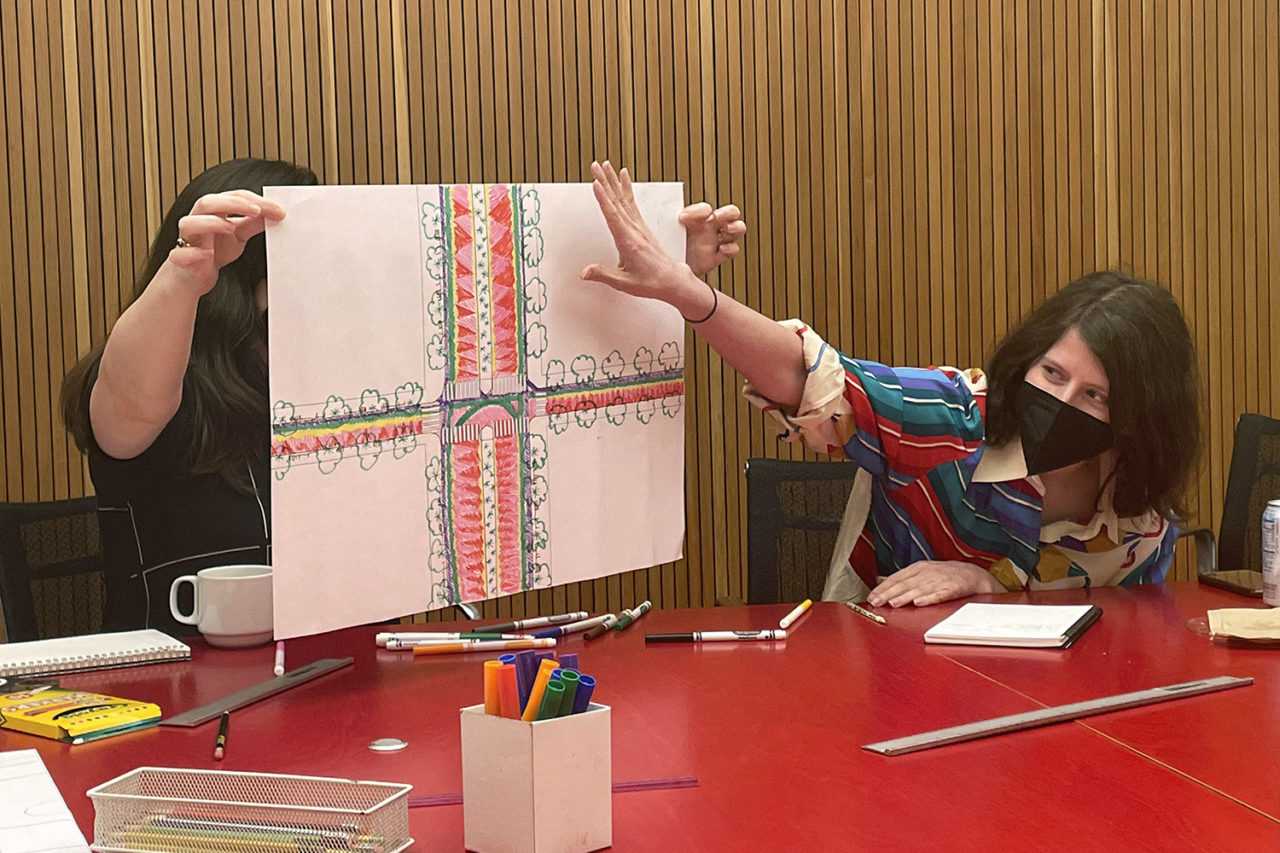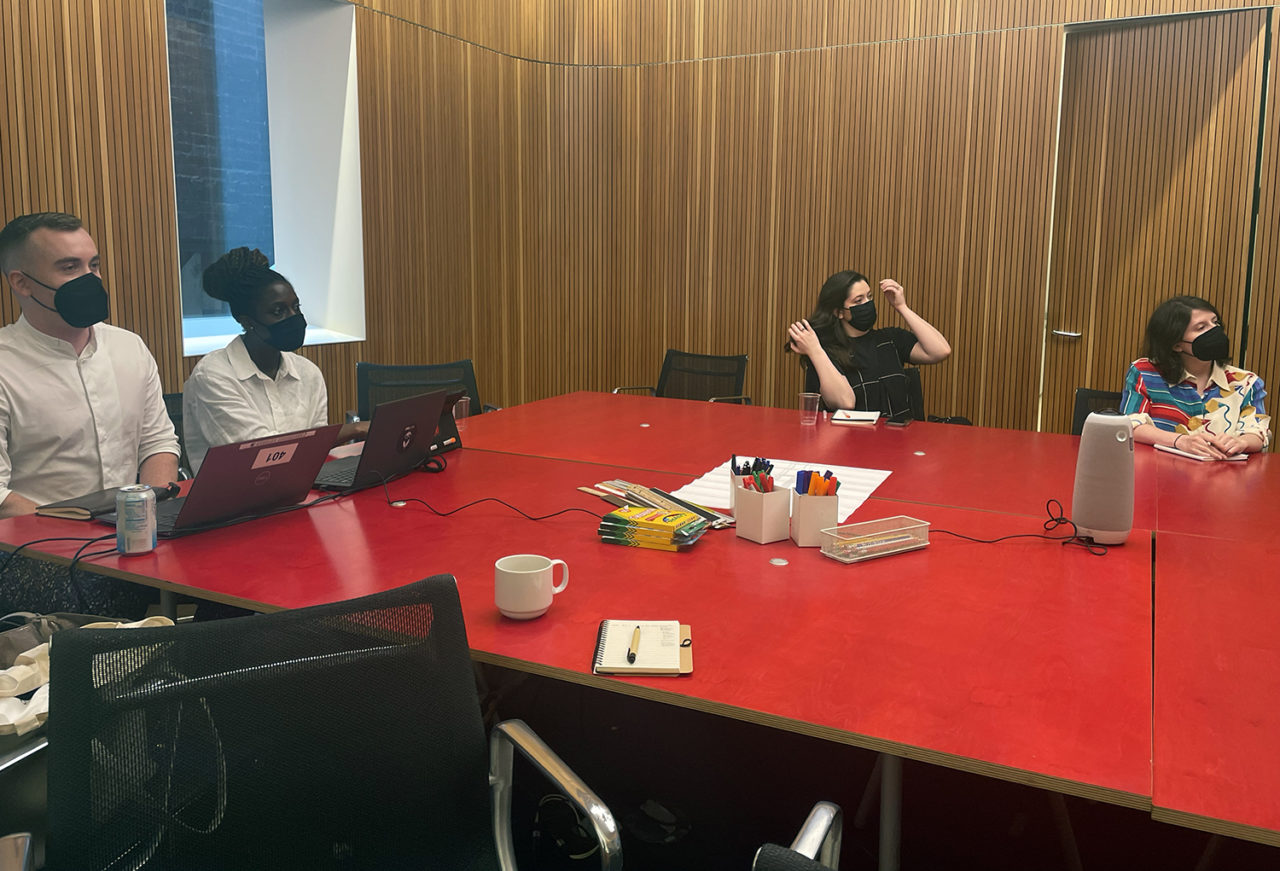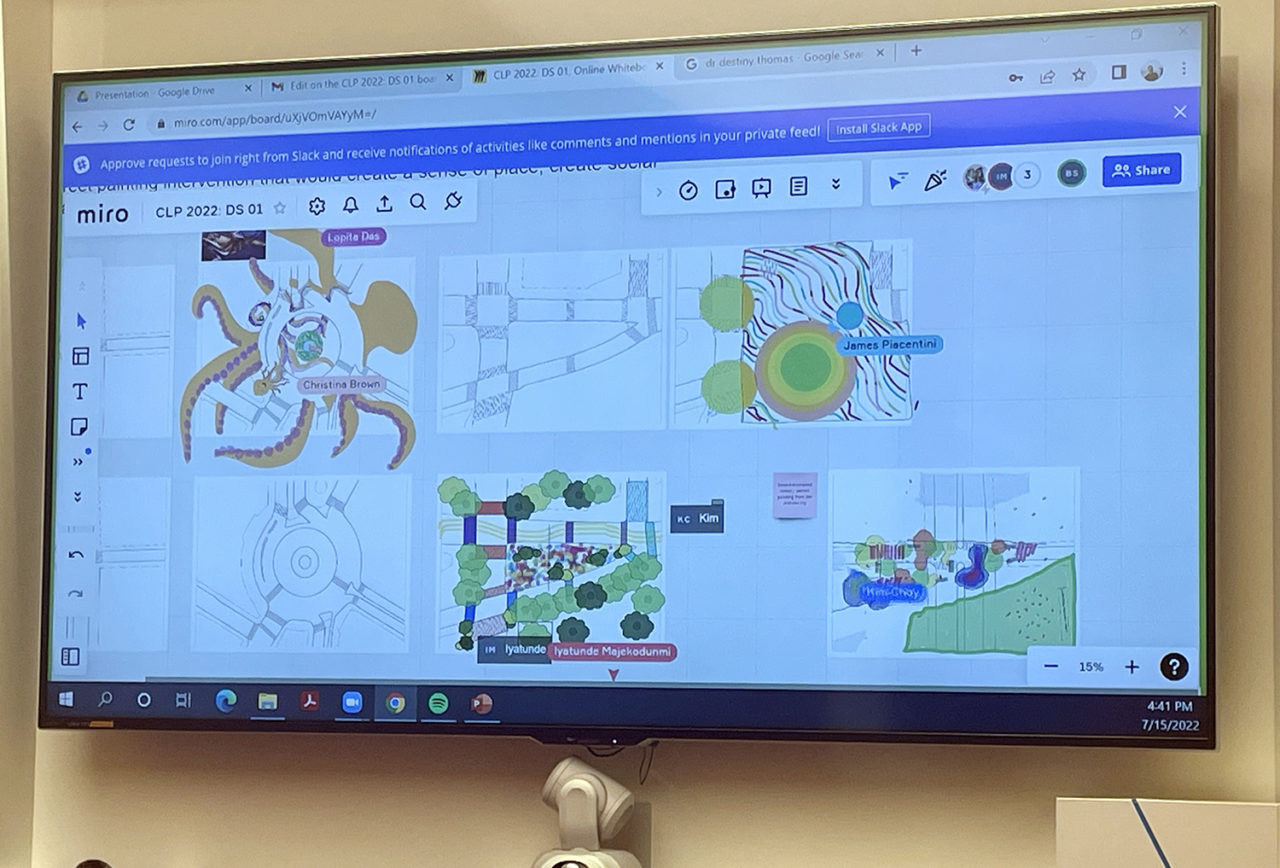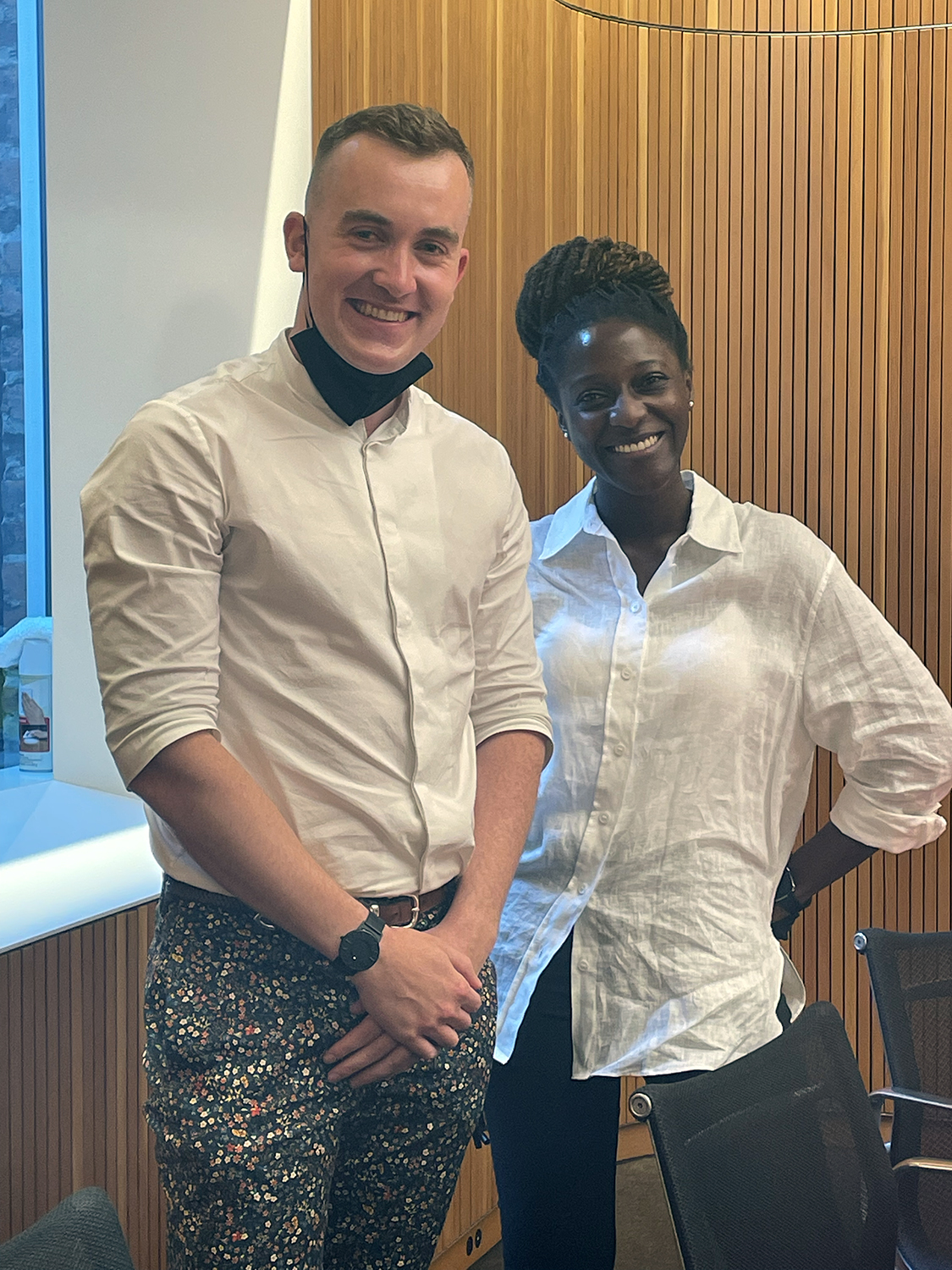by: Tosin Bamidele, Assoc. AIA, and Bradley Sherburne, AIA
On Friday, July 15, the 2022 class of the AIANY Civic Leadership Program hosted their first hybrid development session, organized by Tosin Bamidele, Assoc. AIA, and Bradley Sherburne, AIA. The session focused on urban happiness, its catalysts, effects, and applications.
The development session provided a space for architects and other building professionals to share their views on the interrelations between design for happiness, economic prosperity, and community integration. During a series of interviews leading up to the session, it became clear to the session leaders that designing for happiness is deeply intertwined with other fields, including public health, psychology, behavioral economics, sociology, agriculture, and pedagogy. In order to understand happiness planning at the grassroots level, it is important for designers to determine its main drivers, as well as the impacts of change and stress.
Definition, History, and Scope
The development session began with the establishment of a definition of happiness in the urban context, along with a historical overview. Session leaders defined happiness as a persistent state related to feelings of joy, safety, freedom, wellness, fulfillment, equity, and social connection. This was followed by a discussion of the concept of happiness in architecture and urban planning, beginning with Jeremy Bentham’s “Felicific Calculus” through to the utopian movements of Ebenezer Howard, Le Corbusier, and Frank Lloyd Wright, and ending with Walt Disney’s unrealized Experimental Prototype Community of Tomorrow (EPCOT). This, along with a rundown of scientific interpretations and theories on the benefits of happiness and happy neighborhoods, prepared attendees for the remainder of the day.
A Presentation from Happy Cities
Following the introduction, Mitchell Reardon, Senior Planner of Urban Design & Placemaking at Happy Cities, gave a presentation on his firm’s work, which specializes in interdisciplinary urban planning, design, and research based on principles from Charles Montogmery’s book, Happy City: Transforming Our Lives Through Urban Design. In his presentation, Reardon explained their recipe for happiness, which incorporates the core needs of food, water, shelter and safety, as well as concepts like equity, joy, health, ease, resilience, meaning, belonging, and sociability. He also highlighted the impact of urban spaces on well-being and social trust, exemplified by an experiment where volunteers pretended to be lost tourists—complete with upside-down maps—which showed that our surroundings impact whether we are likely to help those in need.
Various Perspectives on Designing for HappinessFollowing Reardon’s presentation, the session continued with a panel that approached the concept of happiness from perspectives beyond the professions of architecture and planning. The panelists included:
- Scott Cloutier, Assistant Professor, School of Sustainability, College of Global Futures at Arizona State University
- Sarah Williams Goldhagen, Author, Welcome to Your World: How the Built Environment Shapes Our Lives
- Ohemaa Poku, Director of Global Practica and Internships, Columbia-WHO Center for Global Mental Health
Cloutier simply yet holistically defined happiness in a way that captured its complexity: how positively people feel about their lives. As someone with an engineering background, his work in happiness stemmed from his disappointment with the emphasis on efficiency rather than wholeness in the general discourse on happiness. Similarly, Goldhagen, defined happiness as wellbeing, whilePoku defined the concept as absence of negatives and the presence of positives. The panel also discussed how, as designers, we can tell people are happy with our work when they are willing to share these spaces or products with each other.
On the surface, happiness is free. It is up to designers, planners, governments, and other stakeholders to put in the work to improve the overall quality of life of a city’s occupants. When asked what the biggest challenges to achieving overall urban happiness were, the panelists shared some from their personal experiences. These ranged from cost to discrimination, the rigidity of urban silos, power imbalance, and willful ignorance. The panelists also spoke about how many obstacles to urban happiness stemmed from a communication breakdown between end-users of urban spaces and decision-makers. The panelists all echoed a similar solution, which involved inviting top-level administration to neighborhoods for close-up experiences of what community-based problem-solving looked like and how that easily translated into happiness.
Painted Streetscapes
The session concluded with an activity designed to provide time for reflection on the experiences and perspectives shared by the speakers. Bamidele and Sherburne highlighted the positive effects of painted streetscapes on street users and on and public safety. They then invited the participants to design their own examples, using abstract drawings of urban spaces while discussing significant takeaways from the session.
Core Takeaways
The development session was mentally stimulating, with participants echoing similar sentiments on the first steps necessary to achieving urban happiness. First, it is important to show governing agencies what they are losing by not investing in urban happiness. Second, provide data-based evidence to back up new changes to neighborhoods, as people are more likely to change their minds when there is evidence of benefits. Finally, give people the agency to make decisions about their communities and futures.
Special thanks to:
Mitchell Reardon, Happy Cities
Houssam Elokda, Happy CitiesOhemaa Poku, Columbia University
Sarah Williams Goldhagen
Scott Cloutier, Arizona State University
Andrea Chiney, A + A + A
Sekou Cooke, Sekou Cooke Studio
Toni Griffin, Harvard GSD
Delma Palma, NYCHA
Christina Brown, CLP Advisor
Alejandra Zapata, CLP Advisor
Alicia Duque-French, CLP Advisor
Allison Lane, CLP Advisor
Anne Chen, CLP Advisor
Kavitha Mathew, AIANY











